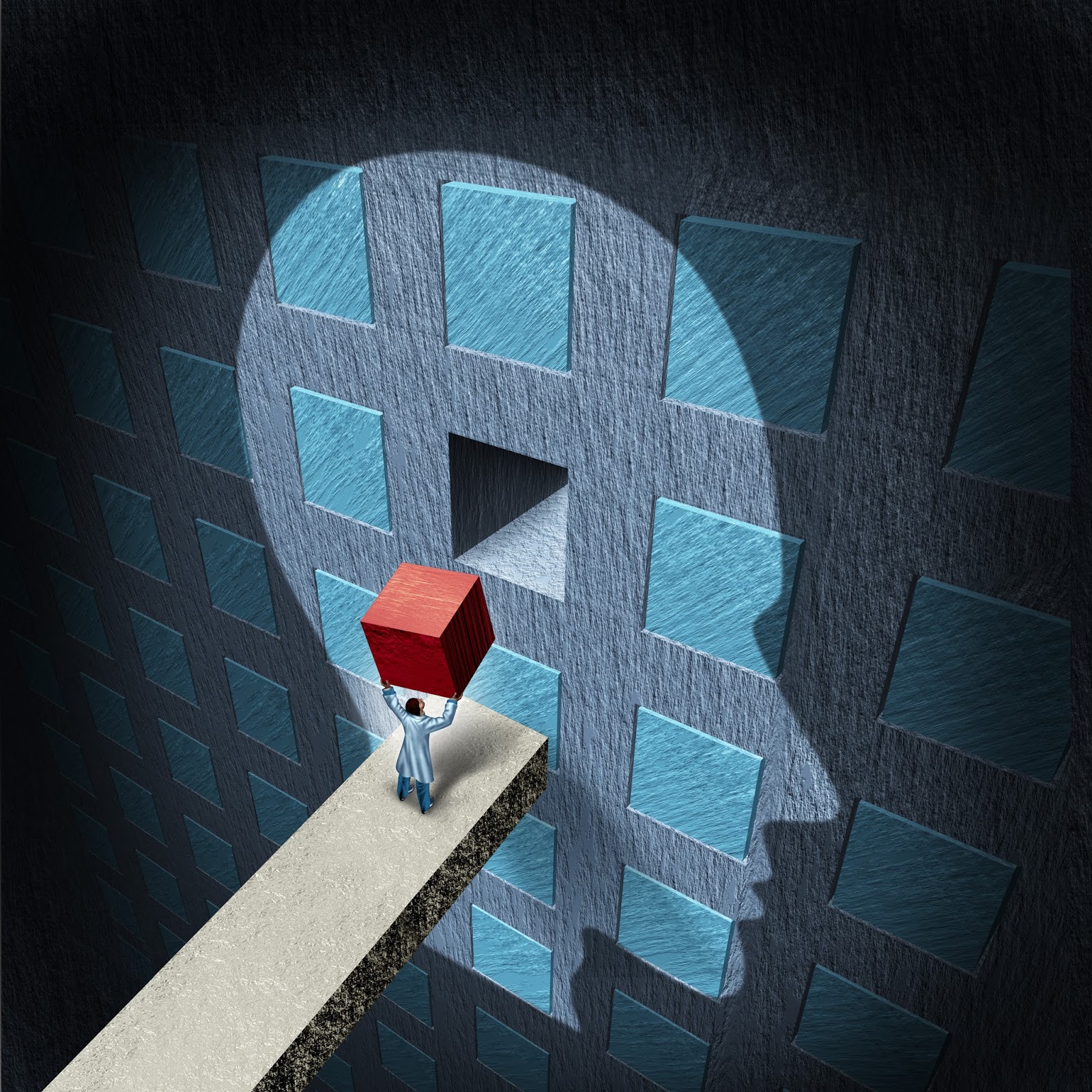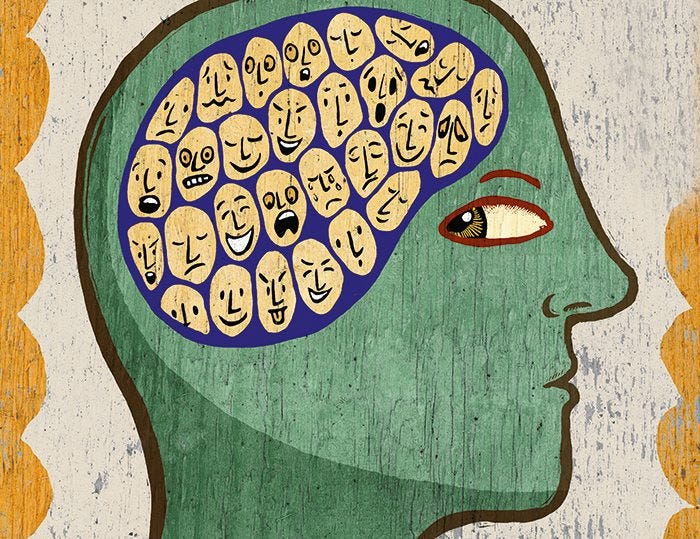Research Notes: Body Keeps the Score Part 5b
Bottom Up Regulation
Grounding Techniques are used to work with patients who are unable to handle any of the emotions stemming from their trauma enough to work through it
- The idea is to breath, and through the breath notice the physical sensations throughout your body to connect you more fully to the present
- This includes things like feeling the floor beneath your feet, the expanding of your chest
- Focusing on the breath activates the parasympathetic nervous system
- Other techniques include tapping pressure points (Emotional Freedom Technique)
Inescapable Shock
The smoke detector in the brain can cause shut down because when one is in a heightened state they experience all reactions to trauma simultaneously: Fight or flight, freezing etc.
- In one instance a woman would get excited to go to therapy and experience a trigger because her mind automatically associated excitement (such as what should feel when her sexually abusive father would come home) with intense panic.
- Thus the association of a positive feeling became a trauma response.

Compartmentalization
Children (and adults) are adept at compartmentalizing different aspects of their situation, and associate an abuser with positive and negative experiences - often ignoring the negative associations when something positive is going on.
- This can lead to feeling like your trauma was your own fault
- This will continue until the patient feels safe enough in body to mindfully go back to the experience
Chronic Pain
The memory of helplessness gets stored in muscle tension, feelings of disintegration in affected areas
- ex: genitals in sexual trauma, and head, back and limbs in accident victims (Including me)
Many try to numb the pain with drugs and alcohol
- The flip side of numbing is sensation seeking: people will self harm or perform risky behavior and activities in order to feel something
- It creates a paradoxical feeling of control
Constant muscle tension leads to chronic pain
Yoga & Bottom Up
Biological Marker HRV (Heart Rate Variability)
- Measure of how well the nervous system is working
"heart rate variability measures the relative balance between the sympathetic and the parasympathetic [nervous] systems." p.269
- When our autonomic nervous system is well balanced we have a reasonable degree of control over our response to frustration and disappointments
- Poor modulation = a person thrown off balance.
- People with poor modulation are susceptible to physical illnesses including heart disease, cancer & mental health problems.
People with PTSD have unusually low HRV
Yoga
Yoga is said to improve your HRV scores.
- Changing the way one breathes can improve problems in other areas: rage, depression, anxiety
- In 2014 Dr. Van der Kolk proved yoga did in fact help your HRV through studies.
- Now there are also apps that can help improve HRV using technology.
**This is a place where technology is actively helping to improve medical science
Among other things, Yoga allows people to become much more comfortable in their own body
- Yoga significantly improved arousal problems in PTSD while 8 weeks of DBT (Dialectical behavior therapy) did not affect arousal or PTSD symptoms
All Yoga programs consist of:
1. Breathing Practices,
2. Stretching or Postures
3. Meditation
For the purposes for Therapy the following is included:
1. A limited number of classic postures (emphasis is not on getting poses right)
2. Breathing
3. Mindfulness (not Meditation) by observing their various body parts and seeing our responses to positions
The toughest part of recovery is achieving relaxation and safe surrender.
Early Yoga based therapy had a high (50%) dropout rate and must be done extremely slowly
Learning Self Regulation
Yoga is about looking inward to listen to the body
- Self harm behaviors occur because patients feel so disconnected with the body that they need such a sharp feeling to regain a sense of control in their lives.
You have to learn how to let your body tell the story
- Ex: one woman found that she had flashbacks and was vastly uncomfortable in hip opening positions as they reminded her of her rape
- Certain stretches are harder for traumatized patients.
Interoception
Our sense of Self is deeply connected to our connection with our bodies - what we know from what we can feel, smell, see, taste etc.
Traumatized people need to learn how "to tolerate their sensations, befriend their inner experiences and cultivate new action patterns" p. 275
Body awareness changes sense of time: Trauma makes you feel stuck forever in a helpless state of horror.

Self Leadership
Pieces of Me
Dissociative Identity Disorder (DID)
- At one time called Multiple Personality Disorder
The internal splitting and emergence of distinct identities -> this is an extreme, and only represents the most extreme end of the spectrum
Traumatized people need to explore and even befriend these parts of themselves to heal
**I have thought about Austin somewhat in this context, as he is a separate person in Sam's head who represents her unprocessed feelings of trauma.
Coping
When humiliated we have a tendency to go on the Defensive
- People develop traumatic adaptations to certain environments
- Ex: people will believe they can only survive by acting tough, invisible or absent
- Like traumatic memories, these adaptations continue until the organism feels safe and integrates the parts of themselves reacting to the trauma
Coping takes a toll
- Survival by ignoring, denying or splitting off reality
- Pushing away intense feelings is an adaptation for short term survival
- Learning to live with traumatic memories of the past without being overwhelmed in the present is a key skill
- We must reconfigure our coping habits that at one point helped us survive.
Parts of the Self
We all have parts.
Parts are NOT feelings - they are distinct ways of being "with their own beliefs, agendas, and roles in the overall ecology of our lives" p. 282
Internal Leadership Skills need to be developed to direct different sub-personalities
- The consciousness appears to be divided into coexisting parts that mutually ignore each other while sharing knowledge
- Modern neuroscience has confirmed this through Michael Gazziniga's split brain research
- "The self is not a unified being, and there may exist within us several realms of consciousness" p.283

Internal Family Systems Therapy - Richard Schwartz
The mind is like a family in which the members have different levels of maturity, excitability, wisdom and pain. (p.283)
- Dissociation occurs on a continuum, and the different parts are at war with one another
The family:
The Exiles
- the vulnerable parts of ourselves (often childlike) that become frozen and carry the pain, terror and betrayal in them, making them toxic
Exiles are the toxic waste dumps of the system
- They = collapse, shock: the weak rejected, unloved and abandoned child
- When the self becomes blended with exiles, it seems that we are out of options and any alternative life is eclipsed.
However, Keeping Exiles locked up stamps out not just memories and emotions, but the parts that hold them - the parts hurt most by the trauma.
This is where imagination comes into play for healing, as you imagine yourself saving or changing the narrative that most hurt the exiles.
Protectors: keep the toxic parts of ourselves away but in doing so take on energy of abuser. 2 types:
Managers
- critical parts that make sure we can never get close to anyone
- Relentlessly productive
You have to approach the manager parts carefully:
- Managers are very competent and deal with huge loads of responsibility
- They will go on the defensive and you have to convince them it is safe to open up to the vulnerable areas.
- Can be obsessed with Power and control
Fire Fighters
- Emergency responders acting impulsively when something triggers an exiled emotion
- Both have the primary purpose of protecting the self from feeling the full terror of annihilation
Firefighters will do anything to make emotional pain go away
- While managers are about control, firefighters will destroy a person to extinguish the fire
- Firefighters manifest in addiction and are desperate to protect the system
- They are the parts of us that leave a room, hurl insults, and are frantic
- They believe that any exiled feelings coming to light will crash the entire system
The parts that are "out" represent what you believe is your truest self.
- They may be unaware of the other parts of the system
- You may even dislike these parts, but IFS offers a framework for talking about them
- Looking at it as a functioning system makes it less threatening or overwhelming
The role of a Therapist in this model is to collaborate with you in understanding, not to teach, confront or fill holes
All parts, even if destructive, were formed in an attempt to protect the self-system (p.285)
Leadership
All systems can only function well with competent leadership
blending occurs when the self is no longer in charge:
- a condition in which the self identifies with a part and not the whole.
- "I hate myself, I hate you" vs "a part of me wishes I were dead"
Beneath the protective parts of the self is undamaged essense of a person - something confident, curious and calm
When the protectors are able to deem that they are safe and it is safe to let up, the actual Self will emerge and begin the healing process.
You have to recruit your own self love and strength in order to heal yourself.
IFS allows mental family members mentor each other and learn how one part of the self interacts with another.
Unburdening: revisiting the parts of yourself that are exiled.
- When we nurse the exiled parts of ourselves back to health, This will create more relaxation, and stop patients from judging themselves to harshly, learning to act as a mentor instead
Structures
For those who grew up without positive associations to latch onto in order to heal, gaining a sense of agency can be a massive challenge.
How do we help people become viscerally acquainted with feelings that were lacking early in their lives? p.299
PBSP Psychomotor Therapy
A form of therapy that uses stand ins to recreate a trauma structure in 3D physical space to allow for some form of integration of the trauma involving a method derived from theater and dance.
Done often in a group setting or with props that stand in for people
How it works:
One person, the Protagonist, sits with other participants
The others in the group, the witnesses, practice microtracking (acknowledging and recognizing subtle shifts in poster, facial expression, tone, eye gaze and nonverbal expressions of emotion)
The therapist makes witness statements as a method of comfort and validation as the protagonist discusses their trauma.
If the protagonist needs it, they are asked to choose a contact person to act as a comforter. They pick one and that person comes and physically moves next to the protagonist as indicated (sometimes including a comforting touch)
Creating Tableau (structures)
The next step is to create a tableau relating to the trauma called a Structure of the Protagonist's past
- Group participants (or sometimes props)are asked to take on the roles of significant people in the protagonists lives
- The inner world is formed in 3D space by having the protagonist direct where each participant, representative of a person in their lives, will stand.
This creates a visual, physical representation of an Inner Map in the real world.
The structures are not meant to literally interpret the past as it happened. Instead, they act as if the protagonist is rewriting crucial scenes from their lives. It is NOT done via improv however
The job of the Therapist is to act as a director to other group members.
The other group members become actors who provide support and take direction to say what the protagonist needs to hear.
"physically reexperienceing the past in the present and then reworking it in a safe and supportive container can be powerful enough to create new supplemental memories" p. 302
- It does not erase bad memories, or even neutralize them, simply offering fresh options that are more positive.
The 3D nature of the structure turns the forbidden experiences into a visible, concrete reality, similarly to IFS. It creates a 3D Image of whom or what you had to deal with, giving you the chance to create different outcomes.
***I am curious about how I can apply this to my game when ultimately the thing that Sam has to deal with is complete isolation. I wonder if perhaps she can try to create a structure with Austin but it does not work as there is nothing there? Sorry for this long note to myself, I don't know if this will make sense to other people!
***Given how my camera game is intended to work in the game, I wonder if maybe I should consider making it less about grounding and more about creating structures? Or would that be delving too far into treatment when the experience I am going for has more to do with the untreated experience? Perhaps reference to it may be enough?
*** I am intrigued at the idea for a totally different interactive experience in VR where traumatized players or patients may be able to create their own Structures in a virtual setting with the guidance of a more automated therapist? Interesting idea to shelve for later!




Comments
Post a Comment